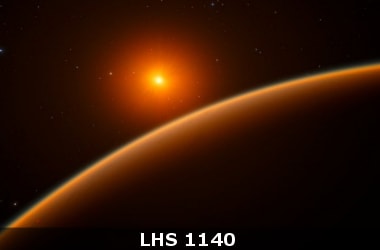
Scientists have discovered a new Earth-like planet orbiting a red dwarf star about 40 light years away, which may be the best place yet to look for signs of life beyond the solar system.
Using European Southern Observatory (ESO)'s HARPS instrument at La Silla, and other telescopes around the world, an international team of astronomers discovered the exoplanet orbiting in the habitable zone around the faint star LHS 1140.
This world is a little larger and much more massive than the Earth and has likely retained most of its atmosphere.
This, along with the fact that it passes in front of its parent star as it orbits, makes it one of the most critical future targets for atmospheric studies.
Red dwarfs are much smaller and cooler than the Sun.
Although the super-Earth LHS 1140b is ten times closer to its star than the Earth is to the Sun, it only receives about half as much sunlight from its star as the Earth and lies in the middle of the habitable zone.
The orbit is seen almost edge-on from Earth and as the exoplanet passes in front of the star once per orbit it blocks a little of its light every 25 days.
For life as we know it to exist, a planet must have liquid surface water and retain an atmosphere.
When red dwarf stars are young, they are known to emit radiation that can be damaging for the atmospheres of the planets that orbit them.
The planet's large size means that a magma ocean could have existed on its surface for millions of years.
This seething ocean of lava could feed steam into the atmosphere long after the star has calmed to its current, steady glow, replenishing the planet with water.
The astronomers estimate the age of the planet to be at least five billion years.
They also deduced that it has a diameter 1.4 times larger than the Earth - almost 18 000 kilometres.
However, with a mass around seven times greater than the Earth, and hence a much higher density, it implies that the exoplanet is probably made of rock with a dense iron core.
This super-Earth may be the best candidate yet for future observations to study and characterise its atmosphere, if one exists than Proxima b or TRAPPIST-1.